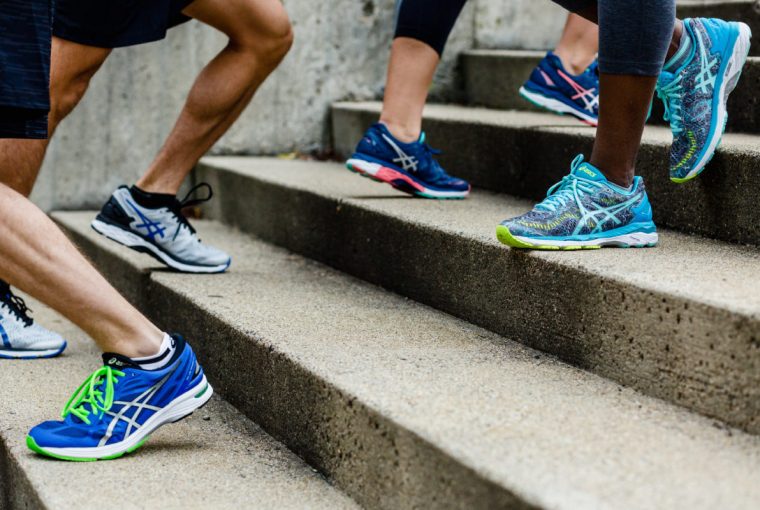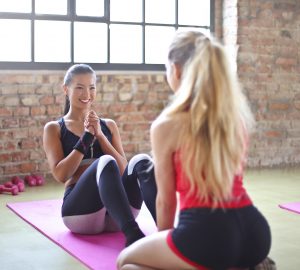Of all the different types of athletes out there, runners might take the cake when it comes to chronic injury. Though every runner is different, there are a handful of injuries that are typical of runners including Achilles tendonitis, plantar fasciitis, and “runners knee.”
No movement is inherently good or bad. Injury occurs when the external load exceeds the load bearing capacity of the tissues. Simply put, if your joints, tissues and muscles, are not strong enough to perform the tasks you’re asking of them, an injury is inevitable.
Despite what non-runners commonly say: “running is bad for your knees!”, the fact is that if your knees and surrounding tissues can support the load bearing capacity of running, and your joints function the way that they are supposed to, running is not bad for your knees, hips, ankles, feet, or whatever other part of the body you can think of.
Imagine this scenario. You buy a car to drive daily and everything runs well. You put gas in it, and occasionally run it through a car wash. But suppose you put diesel in it instead of gas one day. Would you be surprised if it didn’t run as well, or at all? What if you didn’t do any maintenance at all, and your engine seized because you forgot to put oil in it? Would you expect your car to run without doing the basic maintenance required for the car to run or outraged that it quit working? Now imagine that your body is the vehicle. The gas is healthy, balanced meals, while the diesel is greasy, junk food. Your joints and muscles are the engine, while strength and mobility work are the oil.
Maintenance isn’t sexy, or cool. It’s time consuming and it doesn’t appear to have any immediate benefit. But when it comes down to it, maintenance is what keeps your body functioning healthily, and what allows you to continue to do what you love, pain-free.
The truth is that there is no magic group of exercises that can be done once in a while that will keep you from injury. Preventing injury means CONSISTENTLY fueling your body properly, listening to what it’s telling you, and incorporating a regular strength and mobility program to compliment your run training.
With that being said, here are some exercises that can be used in as a warm up or cool down, or be used as additional prehab exercises in your strength program. This series will strengthen the glutes, hamstrings and core, which are typically weaknesses for runners.
- Lunge Matrix (Front, Lateral and Reverse) x 3-6 per leg
The Lunge Matrix is 3 lunges – front, lateral and reverse. First step is to lunge forward bending the knees so both legs make roughly 90 degree angles. Push off the front leg and return to the starting position. The second lunge, or lateral lunge, is to the side. The leg that takes the step should be bent, while the other leg remains straight and stretched out to the side. Return to start position. Finally, the third lunge, or the reverse lunge, you step back, so you end up in the same 90 degree lunge position as the forward lunge, just on the other leg.
- Glute Bridge with March x 6-10 per leg
Start on your back with your knees bent and feet on the floor. Drive your heels into the floor, squeeze your glutes and lift your hips off the floor. Brace your core and slowly lift one leg off of the ground bringing your bent knee toward your nose until your shin is parallel with the ceiling. Be sure that your hips do not drop and your torso doesn’t rotate when you lift your leg.
- Pallof Iso-Hold Dead bug x 6-10 per leg, per side
Start on your back with your body perpendicular to a strength band. Bring the band to the center of your body with arms straight out in front. The band should have enough tension that there is no slack when arms are extended. Knees can be bent or straight with shins or feet parallel with the ceiling. Keep the low back pushed into the ground and rib cage down as you slowly lower one leg to a hover then back to the starting position. Once you have done reps on one side, spin around and repeat.
- Standing Banded Single Leg Hip Flexion x 8-10 per leg
Stand perpendicular to the band with the band around the ankle of the outside leg. Standing on the inside leg, lift the leg with the band to 90 degrees. There should be enough tension on the band that the stance leg has to work to keep balance, while the banded leg has to resist the lower leg from being pulled inward. Don’t forget to keep the rib cage down, and core braced.
- Plank Drags x 10-15 per side
Using an object of your choosing (sandbag, dumbbell, etc.), start in a high plank with the object of your choice to one side. Using the hand that is on the opposite side of the body, reach under your torso and drag it across to the other side. Plant that hand, then reach with the opposite hand again to bring the object back across. Keep your hips square to the floor, ensuring that they don’t sag or rotate. Keep a neutral spine with core and glutes braced at all times.
Kristen Hansen, BA, CSEP-CPT, PFT-NAIT, NASM-CES, FRCms
SVPT Fitness & Athletics




